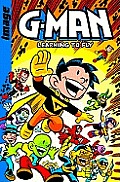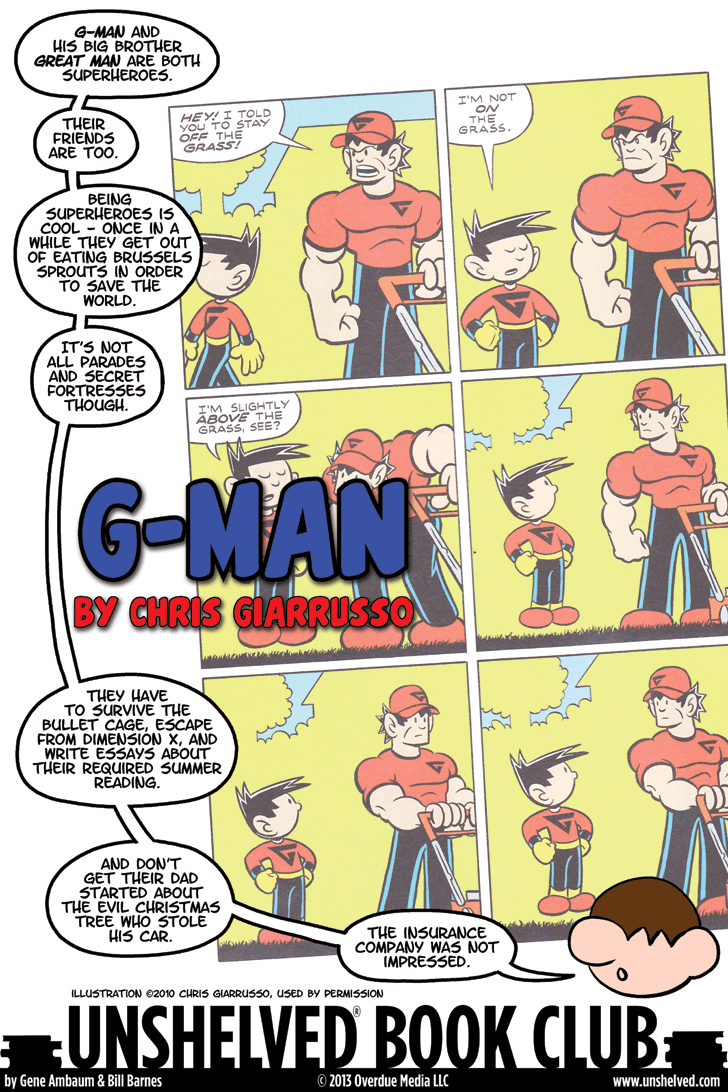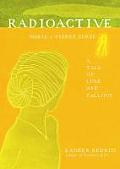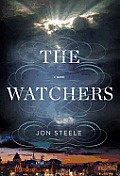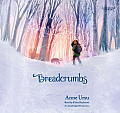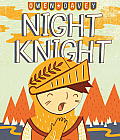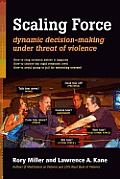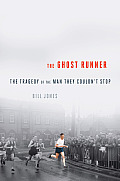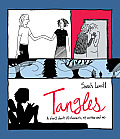Link to this review in the form of a comic strip by billba tagged graphic novel • superhero
Link to this review by craigseasholes tagged graphic novel • biography
A unique, visually stunning tribute to the lives and love of Marie and Pierre Curie. This book shares the passionate, intertwined thrills of the Curie’s scientific discoveries and Marie’s personal flame(s) (which burned well past Pierre’s early death due to radiation-related health problems).
Why I picked it up: It was in the graphic novel section of my local bookstore and didn’t look like anything else on the shelf. The cover seemed to glow.
Why I finished it: The passionate, smart, tragic and triumphant Marie and Pierre Curie, and their discoveries, are exposed through both personal and scientific insights via text, diary entries, and visual artifacts. It all blends to create a book wholly unlike any other I’ve ever seen. There are even maps of Hiroshima and Chernobyl that demand we pay attention to the lingering impact of radioactivity.
I’d give it to: Dena, who is an ER physician and the daughter of an internationally recognized geneticist, because she’d love that the section headings have double meanings: “Symmetry, Magnetism and Fusion” (about Marie’s and Pierre’s early lives and how they met) and “White Flash, Instability of Matter, Half-Life” (about the Curie Lab’s first discoveries, their Nobel Prize, and Pierre’s sudden accidental death).
Link to this review by billba tagged mystery • paranormal
Marc Rochet tends to the bells at Switzerland’s Lausanne Cathedral. From atop the towers he can see much that goes on in the city, though he doesn’t understand most of it. He sees Katherine Taylor, a beautiful young American making an astonishing amount of money as a call girl. He sees Jay Harper, a British detective sent there to do a job he doesn’t understand. He sees the gruesome murder victims that have suddenly started showing up in the streets. And he strongly suspects that fallen angels are involved somehow.
Why I picked it up: I was intrigued by the biography of the author, an acclaimed war photographer, who was compared to Justin Cronin in the galley copy’s publisher’s note.
Why I finished it: This book has a nice Preacher vibe because of a healthy mix of sex, religion, and violence.
I’d give it to: Beth, who is always threatening to quit her job and become a prostitute. This book gives a detailed glimpse into Katherine’s life servicing the rich and famous, which sounds fantastically glamorous (I want a dedicated chauffeur, too) until the moment it collapses around her. (I don’t know if it would change Beth’s mind one way or another.)
Link to this review by snow tagged fantasy • audiobook
Once upon a time there was a girl named Hazel who had a best friend named Jack. Jack was her only friend, and he was all she needed.
Then, one day, Jack changed. He was mean to Hazel and stopped hanging out with her. Hazel’s mother said that was just something that could happen between friends, especially when one is a boy and one is a girl and they are in the fifth grade. But Hazel knew better. She and Jack had read lots of fantasy stories, and she knew there was something magically wrong with Jack.
Hazel was right. But how can a girl who can’t get along in the real world rescue her friend from the beautiful Snow Queen who lives deep in a magical forest?
Why I picked it up: I heard Kirby Heyborne speak at the Odyssey Awards at ALA Annual in 2012. I wasn’t sure I was up to listening to Daniel Kraus’s Rotters, which he also narrated, but I wanted to listen to his work.
Why I finished it: I’ve always enjoyed fairy tale retellings, but was particularly impressed with Ursu’s ability to integrate reality and fantasy in this version of Andersen’s “The Snow Queen.” Though the first half of her story was hard to listen to because I truly felt for the lonely and awkward Hazel, those struggles paid off in the second half when Hazel’s determination becomes the only thing she has that can help Jack.
Heyborne is a very talented narrator, and his voice was the perfect accompaniment to Ursu’s lyrical, poetic descriptions. More than once I sat in the car and kept listening long after I had arrived at my destination.
I’d give it to: Bryson, who will love the idea of superhero baseball and agree with Jack’s dream of “hitting nine hundred home runs, which is better than Wolverine.”
Link to this review by geneambaum tagged picture book
A boy with a colander on his head, who is getting ready for bed, imagines that he’s a knight on an adventure.
Why I picked it up: On the cover, the knight’s face is cut out, showing the boy’s face on the endpapers. It’s a nice touch and makes it look like he’s really wearing a medieval helmet.
Why I finished it: I really loved the second page of the story, where the living room blends seamlessly into a forest (with the same color scheme).
I’d give it to: Brian, because he played a little Pitfall! back in the day. The page where the knight is brushing his teeth while jumping from one alligator’s head to another, will give Brian a chance to talk about this and other great Atari classics with his son, Owen.
Link to this review by flemtastic tagged nonfiction
Miller and Kane share their knowledge about the difference between practicing martial arts and being in a dirty street fight, with a focus on surviving. They always say removing yourself from a situation is the best solution, though they acknowledge that is sometimes not possible. While some techniques they explain involve complex grappling skills like elbow and hand locks, others stress the value of planning ahead in the hopes of responding better under stress.
The book progresses through the six levels of force, from least to most intense. Level one tries to avoid escalation with techniques like distractive and directive touch. Level six is about when and how to employ deadly and destructive force. The techniques are supported by real-life examples from the authors’ work as prison guards and in the security industry.
Why I picked it up: I carry a concealed handgun sometimes. As I’ve said in other reviews, I have concerns about what I would do in a life-or-death situation.
Why I finished it: There is a quote from Teddy Roosevelt, an outdoorsman and grappler, that buttresses the authors’ contention that one should always try to end a fight ASAP: “The unforgivable crime is soft hitting. Do not hit at all if it can be avoided; but never hit softly.” The authors’ stories really brought this home. One described using a hair hold to takedown a violent drunk — after the fight he found that he was holding a hank of hair attached to a piece of scalp. And I learned baggy jeans can be used as a weapon against the person wearing them. Stepping on the low-hanging crotch of the pants will immobilize the legs, making them easier to control.
I’d give it to: My wife and daughter, who want to take a self-defense course. Reading the first half of the book would teach them how to avoid a dangerous situation and about the “victim interview,” how criminals size up a potential victim.
Link to this review by darcy tagged nonfiction
This is a sewing book loaded with creative ideas that use thrift store finds or tired, boring sweaters you already own. It gives detailed instructions on how to find the right fit, reuse materials, and hem clothing in a flattering and artistic way.
Why I picked it up: I have a sewing machine and it scares me. I’ve decided to learn to tame the beast. I spent part of the summer creating my own sewing area and then started hunting around for pattern and idea books. Fabric is expensive, and really cool fabric is very expensive. I liked the idea of reusing or upcycling clothing.
Why I finished it: This is not your mother’s (or grandmother’s) sewing manual. The photographs are gorgeous and inspiring; there is something simple and beautiful on nearly every page. I loved the stitching guides and the whole idea of “drawing” with a sewing machine. Improv isn’t just for jazz anymore, but I’ll probably still listen to Charlie Parker while I sew.
I’d give it to: Meredith. She loves to thrift shop with me and will use the patterns from log luggers to mittens. I suspect soon, all her children’s clothes will have wavy, decorative hemlines.
Link to this review by flemtastic tagged biography
When John Tarrant was a young boxer, he accepted £17 for expenses to get to a tournament. He left boxing behind when he discovered his love of solitary running. He wanted to join a local running club, so he applied for an amateur license to compete as a runner. He reported the £17 he received as a boxer years before. This honesty led to a thirty year battle with the British Amateur Sporting Association; they wouldn’t let him run as an amateur, and he wouldn’t let the issue go.
Their intransigence to reinstating his amateur status led to his career as The Ghost Runner. Tarrant would show up at the beginning of a race, his running clothes hidden under a trench coat . He would slip his coat off at the crack of the starter’s pistol and join the race without a number. Each time he stuck it to the authorities, the cheers of the adoring public grew as did his fame.
Running consumed Tarrant to the exclusion of all else. He left his wife and child and abandoned his career. At one point he even moved to South Africa alone for two years to train for an ultra-distance race. (South Africa was willing to grant him amateur status.) Despite his single-mindedness, he was seen by many as a man to emulate because of his willingness to work, his honesty, and his lack of pretense. Tarrant was embraced by the British people because he seemed to be living the life of the popular British comic character Alf Tupper, the Tough of the Track. (Both spent a majority of their childhoods in group homes, both worked in the trades, and both fought officials as they ran their best.)
Why I picked it up: I love the idea of anyone so driven to do what he loves that he ignores officials’ efforts to keep him away.
Why I finished it: Even his training partners, men who spent countless hours with him, considered him difficult to like, stubborn and selfish, yet, each man admired his determination and drive. Tarrant suffered from debilitating stomach problems which often caused him to vomit or have diarrhea many times a race. (Despite this, he won several!) Once, to get his stomach ready for an ultra-distance race, he prepared his stomach by eating a half pound of cheese and drinking a half cup of lukewarm tea. He then ran forty miles with no other sustenance, winning easily. While training to break the world record for a 100-mile race, he logged over 5,000 training miles in a single year. A clear motivator for Tarrant was his childhood. He spent the majority of WWII and a few years afterward in a government home with his little brother. It was an important moment in his development, and the boys’ self-reliance may have been responsible for his ferocious concentration and determination.
I’d give it to: Beth, because she loved Seabiscuit and, strange as it sounds, that book reminds me of Tarrant’s story because they both had lifelong underdog complexes. (At least, I assume the horse did.)
Link to this review by geneambaum tagged graphic novel • biography
The story of Leavitt’s mother living with Alzheimer’s disease. Everyone, including her mother, tries to ignore her memory loss and strange behavior to the end of her life.
Why I picked it up: After presenting about graphic novels at the ultra-fab Alberta Libraries Conference, I heard a story about a well-educated man who had never enjoyed a book until he discovered graphic novels. I wanted to know more. Pat (a board member at the Camrose Public Library) connected me to Kieran (who works for the Book Publishers’ Association of Alberta) who introduced me to Robert. Robert always had a lot of anxiety about reading despite a degree in the field of recreation, extensive work experience in career development, and leading team building workshops. Then Kieran gave him this graphic novel. It cut through all that, and Robert really enjoyed it. Of course I had to try the book myself.
Why I finished it: Leavitt’s mother’s anxiety is plain, particularly as she’s struggling to take care of daily chores and to express herself verbally. It was particularly heartbreaking when Leavitt’s mother doesn’t want to talk about her death and seems angry that her daughter tried to bring it up.
This was all a little more compelling to me because of my grandmother. She has suffered debilitating memory loss for years, but luckily her personality is still largely intact, and she has little anxiety. So far she’s able to express herself, and she’s still funny as hell. This book made me thankful about the specifics of her decline. She’s even able to joke about her death, which she’s always spoken about frankly — I attribute this to her long career as a nurse.
I’d give it to: My mother. The Alzheimer’s material will resonate with her, and she needs to read more comics, but I’m really hoping that Sarah Leavitt’s relationship with her parents and her girlfriend will give my mom the push she needs to vote for Referendum 74 this November. (Note: She did! And it passed!)
